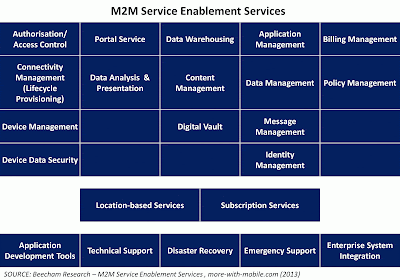Ready to learn Internet of Things? Browse courses like Internet of Things (IoT) Training developed by industry thought leaders and Experfy in Harvard Innovation Lab.
One of the implementation challenges that historically acted to restrain the M2M market is the issue of vertical-specific requirements. Each solution necessitated a new and/or tailored IT development effort; this had an impact on solution development costs and constrained the opportunity to realise meaningful economies of scale.
Over the past few years, the M2M industry has expanded in potential scale and scope. It is now interlinked with high volume, consumer oriented application opportunities and, more recently, with an extremely broad scope of connected devices under the Internet of Things/Internet of Everything/Industrial Internet umbrella. Most recently, this evolution has spawned a number of platform announcements from M2M market research firms and also from businesses, such as Aeris, GE and Wind River, many of which are recasting M2M capabilities in an IoT light. Was any of this predictable?
Around 2010/11, I co-authored a study on service enablement platforms and the capabilities that would be needed to launch M2M solutions. This body of work contributed to the early process of formalising the functional capabilities necessary to support high-performing, reliable and commercial M2M applications. Over 20 service groups were identified, as shown below, and these can be classified as: service-enablement functions; plug-in feature sets; and, technical support services necessary to launch and operationally support M2M applications.
It is clear from this list of service groups (for the study itself, each group was analysed and well over 100 service elements were identified) that there is a high degree of commonality from one M2M solution to the next. Access control, customer portals and data warehousing, for example, can be treated as generalised functions requiring modest customisation from one application to the next.
It should come as no surprise that the M2M industry began to evolve from a vertical-specialisation focus and to move more in the direction of abstracted, horizontal platform capabilities. This arrangement works fine in a strictly M2M world where silo applications need to be enabled at low operating costs and with short development intervals.
True IoT application opportunities, however, present a new challenge because of the value potential arising from cross-silo applications. This can most easily be thought about as one application making use of dedicated sensors as well as data from other connected devices and sensors that relate to a separate (M2M/IoT) application. So, a home heating and ventilation control application might be combined with a separate application for home-appliance (refrigerator, clothes drier) monitoring to support a home energy management application that optimises energy usage and time of use tariffs, for example.
The implication for IoT platforms is that they will need to support cross-platform application usage scenarios. This may be through inter-operability capabilities such as APIs (with application and application-performance status capabilities to enable a dependable quality of service and rapid problem diagnosis). Coherent data models will also be required to allow sensors to be recognised automatically by non-related applications, for example, and also to support the flow of sensor data across platforms that might be configured for silo applications.
Capabilities such as these will be important considerations for companies keen to implement IoT services. It will also have a bearing on M&A and partnering initiatives from the point of view of technology- and platform road-map planning activities.





